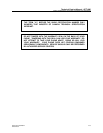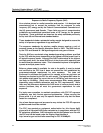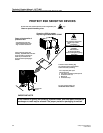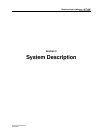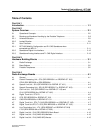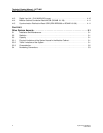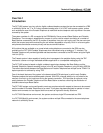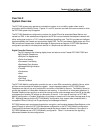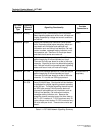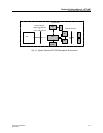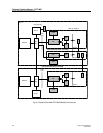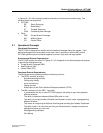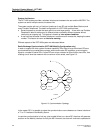
Technical Product Manual - DCT1900
System Description, Introduction
System-DCT1900/R8/mw 1-1
© 2000-2005
CHAPTER 1
Introduction
The DCT1900 system is a pico–cellular, digital cordless telephone system that can be connected to a PBX
or a Mobility Server via T1 or E1 links or standard analog ports. It is a PWT radio access system, and as
such enables the user of the Portable Telephone to make and receive telephone calls anywhere in the area
covered by the system.
The system consists of a RE connected to the PBX/Mobility Server, several Base Stations and Portable
Telephones. The coverage is established by means of a pico–cellular network consisting of a number of
Base Stations connected to the RE. By means of handovers from pico–cell to pico–cell, the user can roam
within the covered area while maintaining the call without degradation of quality. Built–in voice encryption
and phone authentication ensures privacy and secure communications.
All functions that are available on a normal wired analog telephone connected to the PBX are also
available on the DCT1900 Portable Telephones when connected using an analog or T1 interface. The
Portable Telephone will provide digital desk set features when connected to the PBX when using the Digital
Link Unit (DLU).
The Freeset system is also capable of sending short messages to the portable display using the TAP
interface to a server running a dedicated software application or a compatible messaging unit.
The DCT1900 system is based on digital cordless transmissions between the Base Station and the
Portable Telephone. Speech encoding is done in the RE and Portable Telephone, using 32 kbit/s ADPCM.
The radio transmissions between the Base Station and Portable Telephone use multiple carrier TDMA. Full
duplex operation is achieved by using TDD.
One of the basic features of the system is the decentralized DCA technique, by which each Portable
Telephone selects the best available speech channel. With DCA, channel selection is not limited to the
moment of call set–up, but continues during the speech connection. DCA provides for optimum voice
quality between the Portable Telephone and the Base Station as well as controlling the distribution of
available channels per Base Station.
The DCT1900 system can be configured to meet user requirements with respect to the area to be covered
and the number of Portable Telephones to be used. This system has been designed to operate in indoor/
outdoor environments and can support both low as well as high traffic density situations.
In a DCT1900 Standalone environment, the system contains a single RE connected to a PBX.
In a DCT1900 Mobility environment, the system contains multiple REs connected to the same telephone
network via a Mobility Server.



